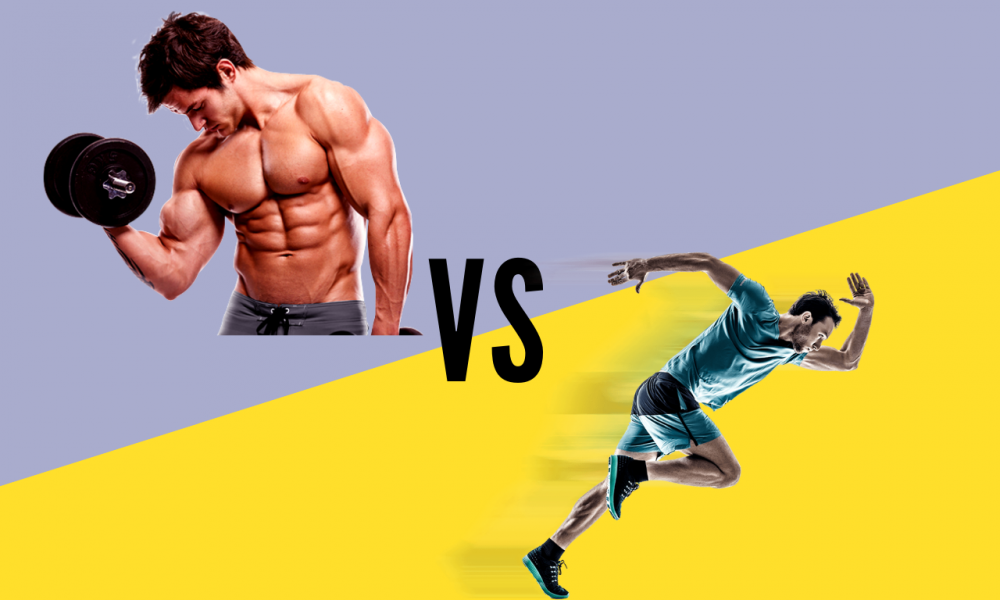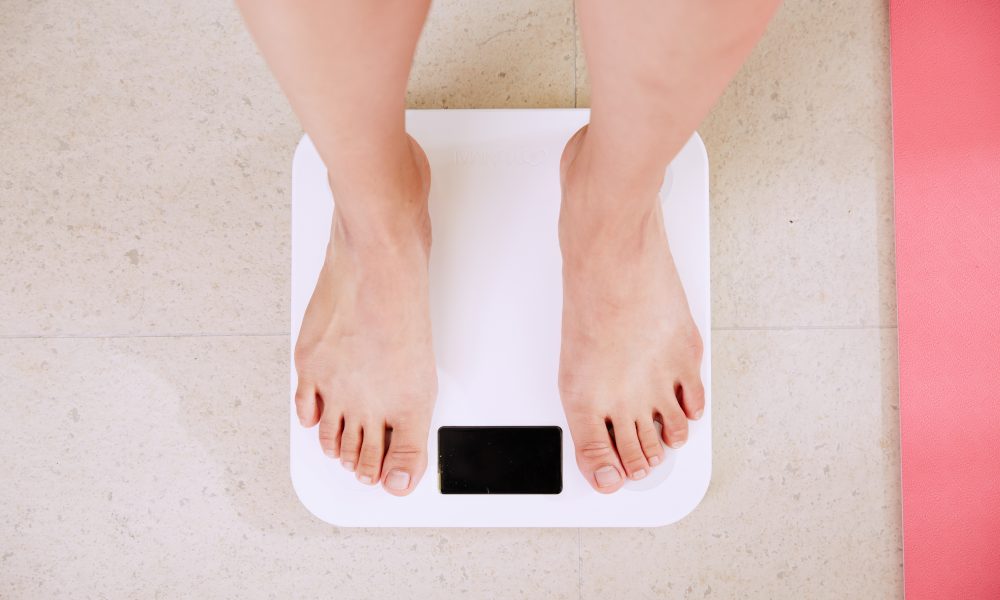
Training to Failure – Optimal or Overrated?
Training to Failure – Optimal or Overrated? The training to failure debate rages on as bros, lifting nerds, and coaches just can’t seem to agree

Strength training vs cardio is a flaming hot debate. However, it’s often misunderstood even when it comes to professionals.
Before we move forward, I just wanted to remind everyone that exercise is always better than no exercise, so even if you’re doing a sub-optimal type of exercise, it’s still infinitely better than sitting on the couch inhaling a bag of chips.
Now as far as which one is better, here are the 2 most common positions on this topic:
Most general population people think strength training is better for building muscle and cardio is better for losing fat.
Most personal trainers think you should do both strength training and cardio equally regardless of your goal as this is a balanced approach.
Believe it or not, both of these perspectives are completely wrong!
Here’s the right perspective based on scientific evidence even though it will sound so politically incorrect.
Strength training is overwhelmingly better than cardio for all relevant goals including fat loss.
Now obviously for some uniquely specific endurance related goals, like becoming one of those lame marathon runners, cardio clearly becomes more important because of the endurance demands of the sport.
But when it comes to the average person’s goal of looking good naked, losing fat, building some muscle, having definition, and being healthy, strength training is unquestionably better.
It’s not even close if I’m being honest.

Most trainers who say you should be doing both equally, either:
I still recommend cardio if:
Before I get into the research behind everything, I wanted to quickly clarify the misunderstood difference between strength training and cardio. Most people think cardio is just stuff like running and strength training is just resistance exercises using weights and machines.
These are decent generalizations, but a more accurate way to think of it is through the adaptation or benefit it creates. If it’s more of a strength and hypertrophy adaptation, it’s considered strength training. If it’s more of an endurance adaptation, it’s considered cardio.
So exercise methods that attempt to combine cardio and strength training in the same sitting like group exercise classes or high intensity interval training are not considered strength training.
While these circuit style of exercising has elements of strength training, they are usually still considered cardio because the strength related adaptations they produce are compromised while still possessing the drawbacks of cardio like it’s ugly interference effect (1, 2, 3, 4).
This why guys who only do sweaty Bootcamp classes or play recreational sports never get muscular and jacked.
This is why women who do spin classes or interval training never get toned and defined.
In both of these scenarios, their strength/muscle-related benefits were insignificant because their entire workout was basically all cardio.
Anyways, I think I’ve made the distinction clear enough, so let’s move on.
The most obvious benefit of strength training is that it immensely builds more strength and muscle than cardio (5).
This visibly allows your muscles to have a nice shape, get big if desired, and lift an impressive weight.
Strength training is also better at retaining muscle while weight loss occurs ensuring the weight you lose is mostly fat.
Apart from these obvious benefits, strength training still beats cardio in many other aspects as well. Let’s take a look.
Contrary to what many people believe, strength training is superior to cardio for fat loss.
Studies show those who strength train tend to have smaller waists than those who do cardio as it’s a better way to burn belly fat (6, 19).
A recent systematic review showed strength training caused more weight loss, fat loss, muscle retention, and better health (7).
Another review found strength training to be the only modality to improve your metabolism even when compared to both cardio and a combination of strength training/cardio (23). The combination group often did more exercise too.
Another study showed when comparing strength training to cardio or a combination of strength training plus cardio, pure strength training suppressed appetite better, positively affected hormones better, had better fat loss, and more favorable muscle retention (8,24).
Another similar study had the same 3 groups (9). One group only did strength training. One group only did cardio. And one group did a combination of both strength training and cardio. The strength training only group lost the most fat, kept the most muscle, had the best increases in strength, and displayed the best bone health despite the combination group having more total exercise time.

We already learned strength training can build muscle or lose fat while retaining muscle (14).
But most people don’t just want to build muscle or lose fat. They want to do both at the same time. This is called body recomposition. It’s a pretty difficult process, but made possible thanks to strength training (10).
You can’t recomp with cardio.
If you’re a guy who wants to build big arms while losing your beer belly, you have to strength train.
If you’re a girl who wants an Instagram model size butt while losing the flab under your arms, same thing applies here. You have to strength train.
It’s often believed that cardio is good for your heart and strength training is good for your muscles. This is overly simplified because strength training is good for your muscles as well as your heart.
Strength training has been shown to have plenty of heart related benefits along with other health benefits (7, 8).
One 12-week study showed strength training has the ability to reduce heart fat while cardio couldn’t (20).
Strength training also makes you live longer, reduces depression symptoms, and reduces all cause mortality independent of cardio (11,12,13).
Strength training is also crucial for diabetics as it’s been repeatedly shown to improve glycemic control better than cardio (21).
Strength training is also much better for your bone health. It can increase (not just slow the decay of) bone mineral density in post menopausal women which is nearly impossible (22).
By now, it’s clear strength training is not only better for weight loss, but losing the unwanted kind of weight (fat) while retaining the desired weight (muscle).
However, there is another jaw dropping exclusive benefit to strength training on top of all of these already powerful body transforming advantages.
Strength training also makes the entire physiology of weight loss easier.
Here’s why and how.
One of the most important ways your body burns calories is through what’s called NEAT. Neat stands for non-exercise activity thermogenesis and it basically refers to all the calories your body burns through non-exercise specific movements like blinking, fidgeting, taking out the trash, or liking pictures on Instagram with a double tap.

As you lose weight, you unknowingly move less by decreasing NEAT. Your body also becomes more conservative with the energy it burns because it doesn’t need to burn as much to power a now smaller body. You essentially burn less calories as you get lighter making weight loss more difficult.
This is why you could eat the same low-calorie diet for months, live the same lifestyle, and lose weight easily the first few weeks, but then, struggle like crazy just the see the scale drop by a decimal.
Long story short, natural NEAT reductions screws you over which makes your weight loss efforts more difficult as you lose more weight.
But before you start crying like a hopeless baby, here’s the good news.
Strength training is the only style of training that either reverses NEAT reductions or increases NEAT (15,16,17).
Cardio on the other hand doesn’t reverse NEAT. It actually further contributes to NEAT reductions.
This study showed the strength training group increased NEAT by 216 calories per day while the cardio group decreased NEAT by 148 calories per day (18).
As you can see, cardio is pretty overrated. It’s worse for losing fat and retaining muscle while making overall weight loss more difficult by supporting the down regulation of NEAT.
For further evidence, if you look at my client testimonial page, every single one of my clients reached their personal goals with little to no mandatory cardio.
When comparing strength training and cardio directly, strength training takes the cake for every relevant comparison. This is very easy to see in well designed studies.
Unfortunately for most of the existing research comparing only strength training against a combination of strength training with cardio, the studies are extremely flawed.
These studies usually have the combination group exercising more which inevitably gives them an advantage. To truly compare strength training by itself against a combination of strength training plus cardio, you would need controlled studies where the volume/duration of exercise between groups is the same.
We don’t have many, but still, the strength training only groups seems to show advantages even when study design puts them at a disadvantage.
Strength is superior to cardio in benefits like strength gains, muscle gains, hormonal health, bone health, glycemic control, fat loss, and the reversal of NEAT.
On top of all this, cardio has 2 glaring drawbacks thanks to the interference effect and the decrease in NEAT. These drawbacks cause you to build less muscle/strength and make it harder to lose fat.
This is why apart from pure enjoyment or a need for endurance adaptations, it just doesn’t make sense to center your program around formal cardio at all.
Marathon runners, please don’t assassinate me in my sleep. This is merely the truth.
Here’s my final summary and recommendations assuming you’re someone who wants to look good naked by losing fat, building muscle, or both.
GA;, Nader. “Concurrent Strength and Endurance Training: From Molecules to Man.” Medicine and Science in Sports and Exercise, U.S. National Library of Medicine, pubmed.ncbi.nlm.nih.gov/17095931/.
W. Kemmler, M. Bebenek, et al. “Effects of Dynamic Resistance Exercise on Bone Mineral Density in Postmenopausal Women: a Systematic Review and Meta-Analysis with Special Emphasis on Exercise Parameters.” Osteoporosis International, Springer London, 1 Jan. 1970, link.springer.com/article/10.1007%2Fs00198-020-05441-w.
Mackenzie-Shalders, et al. “The Effect of Exercise Interventions on Resting Metabolic Rate: A Systematic Review and Meta-Analysis.” Taylor & Francis, www.tandfonline.com/doi/full/10.1080/02640414.2020.1754716.
Grab my free Stupid Simple Scroll to Mastering Hypertrophy

Training to Failure – Optimal or Overrated? The training to failure debate rages on as bros, lifting nerds, and coaches just can’t seem to agree

Diet breaks and refeeds are overrated. I know I’ll offend lots of people and frankly, I don’t give a flying fairy about it.

The fitness industry used to tell you building more muscle will boost your metabolism therefore allowing you to eat more food without fat gain. Fast forward a decade later to present day and coaches are now saying the opposite.